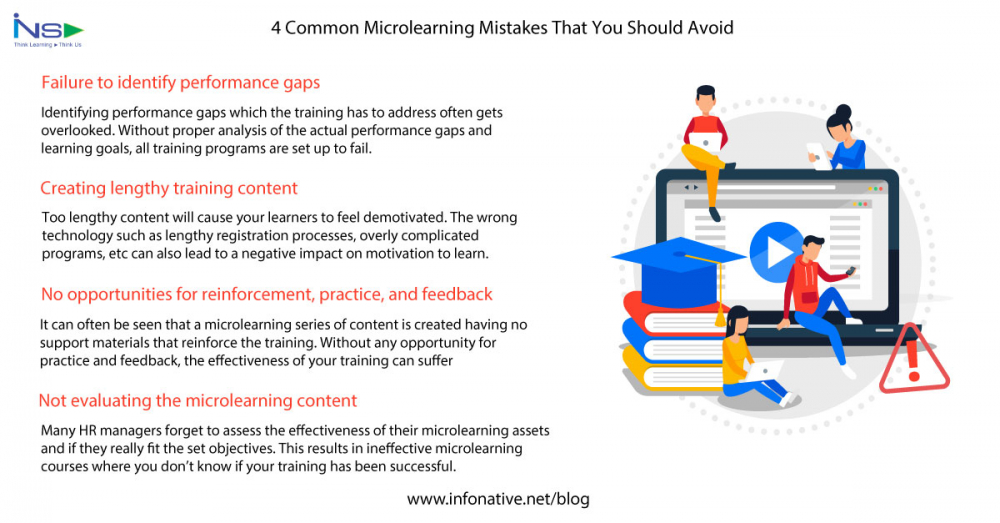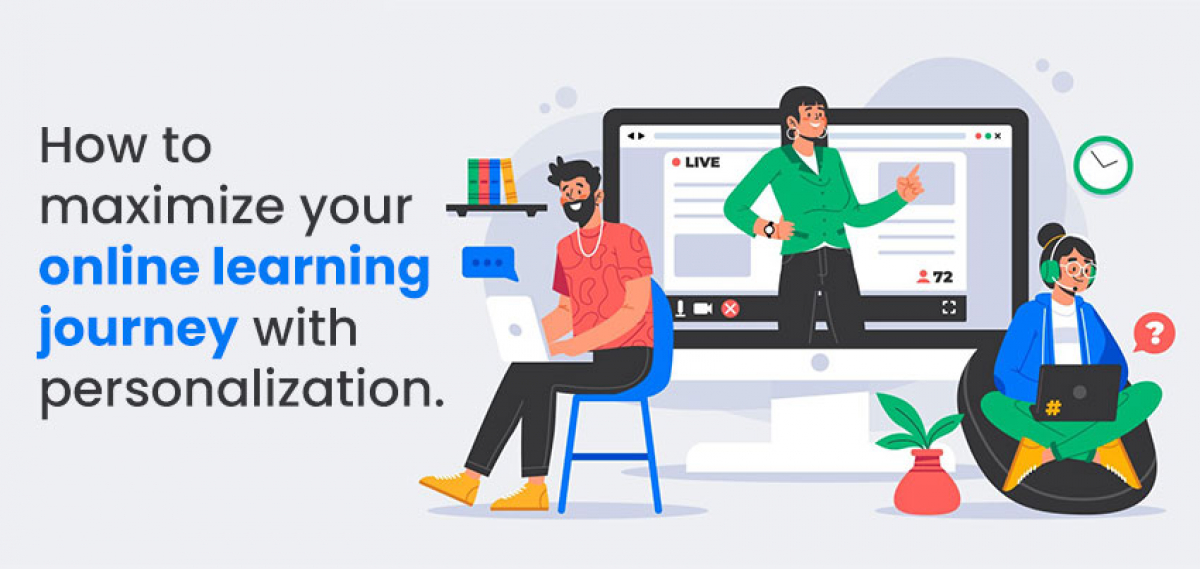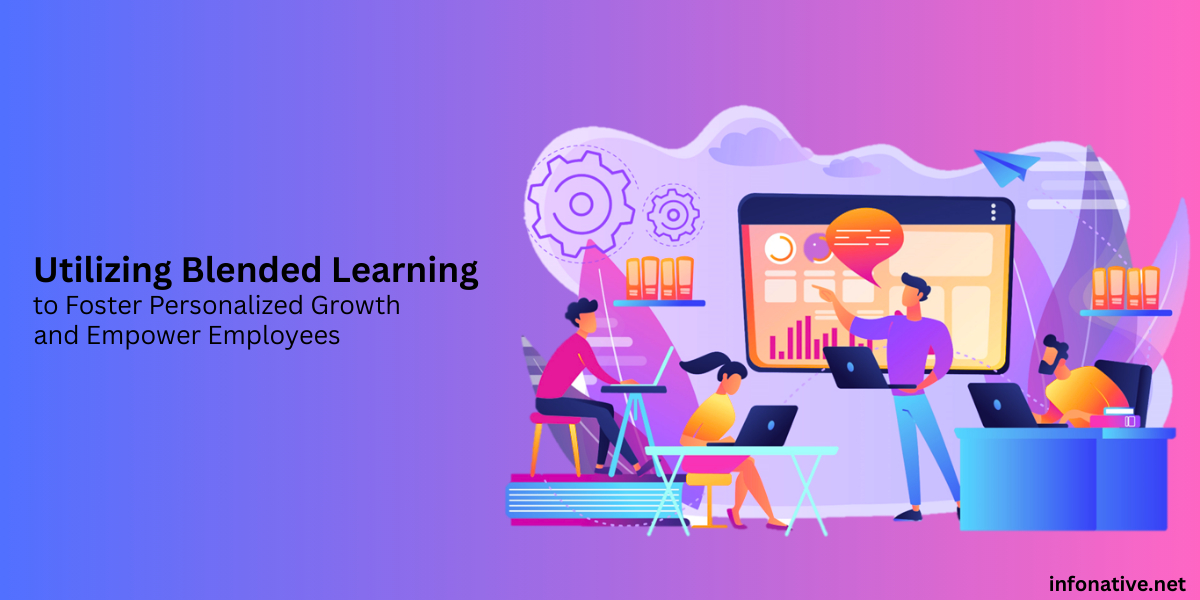Today microlearning has taken the L&D world by storm. The reason is no surprise since micro sized content is very convenient, engaging, and effective for many learners. It has helped many organizations overcome common training challenges.
However, in order for microlearning to work, you need proper development, planning, the right tools, and implementation to ensure training success. Read the article below on the 4 most common microlearning mistakes and how to avoid them:

1. Failure to identify performance gaps
This is one of the most common mistakes that occurs when developing a microlearning strategy. Most often some are so excited to include microlearning in their training, that identifying performance gaps which the training has to address gets overlooked. Without proper analysis of the actual performance gaps and learning goals, all training programs are set up to fail. What is even worse is that all your efforts to create microlearning assets may miss the mark and end up giving little to almost no value to your learners.
Hence, it is of vital importance that this step is not neglected. So how do you find out what needs to be improved and how? You can easily avoid this mistake by doing research to find out the current performance gaps present in your training program. This data can then be to identify the training topics and objectives which will help boost learner performance and help your organization accomplish its goals.
2. Creating lengthy training content
A common mistake is creating training content that is very long and inaccessible. Too lengthy content will cause your learners to feel demotivated. In a similar way, the wrong technology such as lengthy registration processes, overly complicated programs, and slow softwares can also lead to a negative impact on motivation to learn.
Thus with the lack of time and shorter attention spans, it is also important that your microlearning content is not longer than 20 minutes. You could make the training content in a way which makes it possible for the learner to complete each content section within 10-15 minutes. You could also make online courses short such as under 2 minutes. This will help you create short, crisp, and focussed content which will make it easy for learners to fit into their busy schedules. It is also of vital importance that you choose a highly intuitive, easy to use, and mobile-friendly eLearning platform. All this will in turn result in better training recall and retention rates and maximize the effectiveness of your training program.
3. No opportunities for reinforcement, practice, and feedback
It can often be seen that a microlearning series of content is created having no support materials that reinforce the training. Lacking any opportunity for practice and feedback, the effectiveness of your training can suffer tremendously. You must remember that reinforcement, practice, and feedback are the 3 key components which are essential for learning transfer. Without reinforcement, knowledge retention will be poor and learners will not remember most of the training content. Similarly, without practice, learners will not know how to apply it and even if they apply it, it will be incorrect without the necessary feedback. Therefore, training should not be seen as a one time event or piece and should be layered with content in a variety of formats.
So, how do you prevent this mistake? You can partner a microlearning asset with other learning assets and support materials like group discussions, scenario-based simulations, and interactive case studies. This will give your learners plenty of opportunities to practice which will help in turn improve the learning transfer, increase their knowledge retention, and ensure that the new skills and information learnt are applied correctly on the job.
4. Not evaluating the microlearning content
Lastly, it is seen that in many organizations there is a lack of evaluation of microlearning training. Many HR managers forget to assess using data analytics the effectiveness of their microlearning assets and if they really fit the set objectives. This results in ineffective microlearning courses where you don’t know if your training has been successful and you also can't identify the key insights which are required to increase training effectiveness.
To address this issue, you can start using data analytics to track learner behavior and pattern to evaluate your training on a regular basis. Also use LMS and other data like Google Analytics to identify the high performing assets that are improving operational performance. You can evaluate each of the microlearning courses after completion. You can also identify which assets are not being used and update or replace them with assets which provide more value to your organization. You can evaluate each of the microlearning courses after completion. Thus, this will make your microlearning much better and avoid any further mistakes.
Final word
On a final note it can be said that microlearning can be a very effective training approach when properly utilized and implemented correctly. But to make the most out of it, you need to be aware of the common microlearning mistakes mentioned earlier in order to avoid them. Doing this will help you meet your learner needs, increase learner engagement and maximize the effectiveness of your microlearning courses. Avoid making these mistakes mentioned in this article and make your microlearning training content highly impactful and effective.
For any queries, feel free to reach out to us at yg@infonative.net
Check our articles for resources you and your team may need




